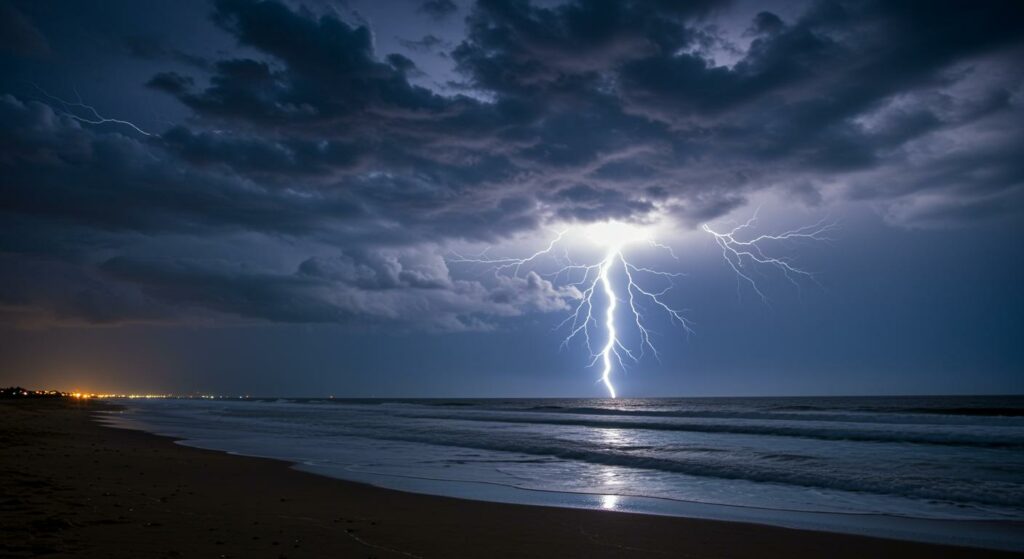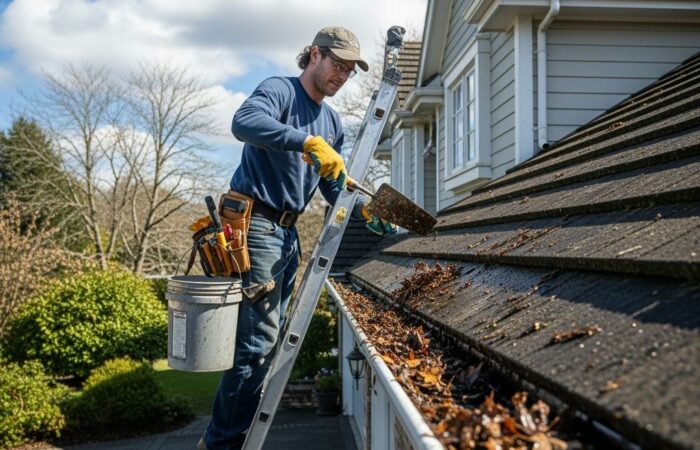
Summer in Madison means beautiful days enjoying our town beaches, private shorelines, and the picturesque Hammonasset Beach State Park. However, Connecticut’s summer weather can change rapidly, bringing thunderstorms that create serious danger—especially near water. As we enter peak beach season, Madison Emergency Medical Services wants to ensure everyone knows how to stay safe when storms approach our shoreline.
Understanding the Risk
Lightning strikes kill approximately 20 people annually in the United States and injure hundreds more. Water, open beaches, and isolated structures like pavilions are particularly dangerous during electrical storms. Tragically, our community experienced this firsthand in 2008 when a lightning strike at Hammonasset Beach State Park resulted in a fatality when a pavilion was struck.
When Thunder Roars, Go Indoors
The most important lightning safety rule is simple: “When thunder roars, go indoors.” Lightning can strike up to 10 miles away from the parent thunderstorm—meaning if you can hear thunder, you’re already within striking distance, even if the sky above you is still blue.
Beach-Specific Safety Tips
Beaches are particularly hazardous during thunderstorms because:
- They’re open, exposed areas
- Water conducts electricity
- You’re often the tallest object on the beach
- There’s limited proper shelter available
If you’re enjoying Madison’s beaches and hear thunder or see lightning:
- Begin packing up immediately – Don’t wait to see if the storm is coming your way
- Seek proper shelter – A substantial building or hard-topped vehicle
- Avoid pavilions, picnic shelters, tents, and beach umbrellas – These do not provide protection and can actually increase risk
- Stay away from isolated trees – They attract lightning
- Get out of the water immediately – Water conducts electricity for long distances
What Constitutes Safe Shelter?
Safe shelter from lightning includes:
- Fully enclosed buildings with wiring and plumbing (bathhouses, park facilities, homes, or businesses)
- Hard-topped vehicles with windows completely closed
These unsafe options provide NO protection:
- Beach pavilions
- Picnic shelters
- Tents or cabanas
- Convertible vehicles
- Golf carts
- Boats without cabins
The 30-30 Rule
When planning beach activities, use the 30-30 Rule:
- If the time between seeing lightning and hearing thunder is less than 30 seconds, lightning is close enough to strike you
- After the last thunder is heard, wait 30 minutes before resuming outdoor activities
If Someone Is Struck
If someone is struck by lightning:
- Call 911 immediately
- Lightning victims do not carry an electrical charge and are safe to touch
- Begin CPR if needed and use an AED if available
- Remember: Madison EMS typically responds to over 1,800 calls annually—we’re trained and ready to help in these emergencies
Planning Ahead
Before heading to Hammonasset Beach State Park or Madison’s town beaches:
- Check the weather forecast
- Have a lightning safety plan and communicate it to everyone in your group
- Know where the nearest proper shelter is located
- Consider downloading a lightning alert app on your smartphone
Remember
The 2008 tragedy at Hammonasset Beach State Park serves as a solemn reminder that lightning safety is not just a precaution—it’s essential. No beach day, no matter how enjoyable, is worth risking your life or the lives of your loved ones.
As your local emergency medical service provider, protecting our community’s health and safety is our mission. Being prepared for summer thunderstorms is an important part of enjoying Madison’s beautiful shoreline safely.
For more information on lightning safety, visit these resources:
- National Weather Service Lightning Safety
- CDC Lightning Safety Tips
- NOAA’s Lightning Risk Reduction Outdoors
If you witness a lightning strike injury, call 911 immediately. Madison Emergency Medical Services responds 24/7 to emergencies throughout our community.



